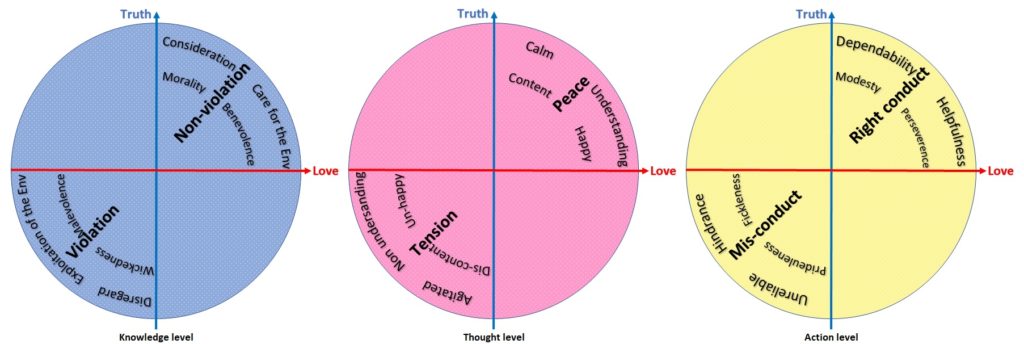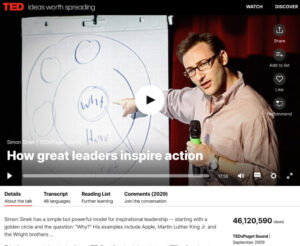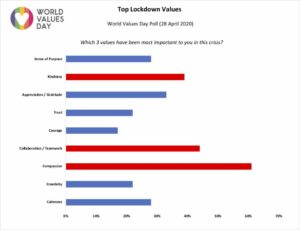By Dr Prabodh Mistry
A simple mathematical model based on human values shows that small actions based on right thought and right knowledge lead to lasting happiness.
Throughout my thirty-five-year career as an engineer and a consultant, my work has been guided by facts as they present themselves. Recently, I have tried to balance the logical outcomes with their consequences on human metaphysics and concluded that such an approach is only possible if we have a robust framework for analysing our thoughts and actions linked to our learnt knowledge or intellect.
I am outlining the framework that shows how human beings act according to their thoughts and knowledge and how it could be used to ensure one’s own wellbeing.
Human Values Model
I have used the classical X-Y graphical approach to build the model on two fundamental values of ‘Love’ and ‘Truth’, which are linked to the right (intuitive) and left (logical) sides of our brain. The two values, referred to as L&T, are first defined as in the table below.
Love
|
Truth
|
Figure 1 is drawn to illustrate ‘related values’ by placing them in appropriate positions, to aid understanding of what we precisely mean by those values. Please note, this approach is not about giving hard and fast instructions on what related values are or where they should be placed, but instead to help set a framework. In fact, the framework allows for the fact that we can differ in our own interpretations. Also, I have drawn a circle around the origin to indicate that as human beings we can only operate within limits and cannot operate with ‘unconditional love’ or ‘absolute truth’ as we are limited by our own comprehension of these values.

Figure 1: Love and truth axis and the four quadrants (Q1 to Q4)
If my wife comes home asking what I think of the dress she has just bought, then I may be torn between what my head says and what my heart says. The right answer should ‘ideally’ be a balance between L&T (i.e. Q1). I have come across the value ‘justice’ being used in many different contexts, varying from fairness (Q1) to vengeance (Q2). We could look at such values in more detail using the L&T plots.
The two core values of L&T are then linked to other positive and negative values and are distinguished at three levels: Knowledge, Thought and Action – see Figure 2. There are many more values that could be included here, but only a small number are shown to illustrate how the model works.

Figure 2: Depictions of values using L&T plots at three levels
I have developed a physical construct of the model to illustrate how the model can be applied to practical situations. The starting, or ideal, position is when there is alignment of the two core values of love and truth at the three levels (knowledge, thought and action). As illustrated by the two examples below, this is the most stress-free way to be. However, if you knowingly act to the contrary (i.e. when the L&T values are not aligned throughout all three levels), there could be tension (or stress). The tension could be of two types: (1) between our action and thought or (2) between our thought and knowledge. We should avoid any tension, but particularly that between our knowledge and thought as it could lead to stress and anxiety depending on the impact of the action. The two examples below illustrate this.
Example 1 – Baking a Cake without Love
Every Friday, someone has to bake a cake at home and bring it to work for sharing. Once it was my turn but I hate baking. I still did it but it was an attempt without spending much time or effort – it was not something I would be proud of. I brought it to work and to my surprise found that the cake was to be shared with a dignitary who was invited to present awards to several high achievers, including me. I now begin to feel bad (and sad) as my thoughts are now trying to resolve the conflict between my thoughts and knowledge. This situation is illustrated in Figure 3, where the ‘owl’ represents a reference point for judgement; in addition, red clips are used to indicate love and blue to indicate truth in relevant quadrants.

Figure 3: Illustration of two stages of tension, described in Example 1
The figure on the left shows misaligned action – cake baked because it was my turn but done without love! There is tension between action and thought levels (shown by the twisted straws). However, when I find out that the cake is to be served to the dignitary, the way I feel about my situation is shown on the right of the figure: there is now misalignment of values and tension between my thought and knowledge. In this example, I did not know the potential consequences of my action (of baking a cake without much care/love) but when I knew the consequences, there was stress and I felt anxious for much longer than a day.
Let’s take another example, where I would know the potential consequences from the outset.
Example 2 – Driving Above Legal Speed
In this example, I have chosen a situation that I found myself in March this year. It concerns driving a car above the legal speed limit. We all know this is wrong, but we still do it because we convince ourselves that it is possible to handle the speed – this may stem from ‘prideful confidence’ or ‘desirous temptation’ (i.e. love) for driving. Because no one in authority (police in this case) is generally watching, there is very little tension as any is between my action and thought. In the model, this represents ‘the action level’ twisting towards love at the expense of truth (i.e. causing tension due to lower level turning anticlockwise) – leading to exogenous tension, between thought and action. Such tension is manageable with relative ease. However, if I am now caught speeding, by the police, the tension becomes more internal or ‘endogenous’ – between thought and knowledge (anticlockwise movement of the thought level in the model).
At this stage, I look to see how I can possibly explain my situation to the police and try to get out of a fine and penalty points on my driving licence. I could increase my internal agony thinking about my reputation in front of my family members, employer and society. What if I work as a judge who casts judgement on others? What if I am a teacher, what will my students think? What if I am the father who has taught my children to not break the law? What if I am a public servant in high position? Such stress would mount up inside of me until something is done about it. But what can be done to reverse such stress? This is where the model could also help to decide the best possible way out of the situation; i.e. how to unravel to release tensions. In this example, it is by accepting the fine and penalty points. If I also resolve to never drive above the legal speed limit then I will have planted a good seed of wellbeing.
The model can be used to illustrate other situations or dilemmas we face, such as revealing the truth about cancer to a patient, drinking and driving, software piracy, paying or avoiding taxes, carrying a knife and many more.
In Summary
I have briefly outlined a way to use human values, in a simple mathematical model, to analyse our behaviour. The approach has been illustrated using a limited number of values but much more detail can be added. The conclusion we can draw, from the model, is that the seeds of wellbeing are contained in taking actions that are driven by right thought and right knowledge. In other words, when they are driven by love and truth.
The model can also be applied at family, organisation or societal levels to address challenges such as climate change, loss of ecological diversity, water shortage and migration. The structure lends to mathematical modelling and is being considered in Artificial Intelligence where machines or robots need to be governed in an ethical manner.
About the Author
Dr Prabodh Mistry (prabodh.mistry@ehv-engineering.com) is a Fellow of the Institution of Chemical Engineers and a Director of Economic & Human Value Engineering Ltd, a consultancy company since 2011. He has created the above methodology (Copyright © EHV Engineering) which is being considered in AI systems and cognitive psychology.






